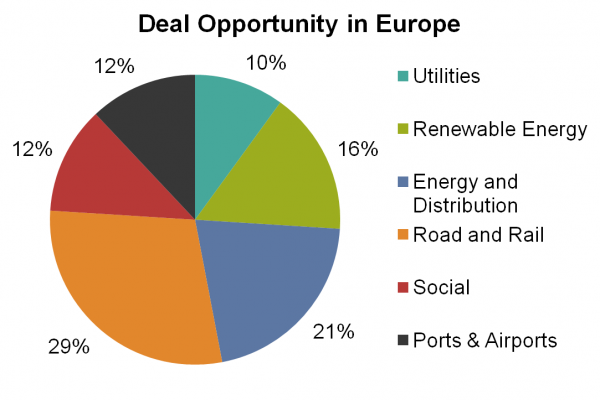Debunking five myths about infrastructure debt
From the blog: The global financial crisis has fundamentally changed the way infrastructure projects are funded. Governments have less to spend, while new regulatory constraints have curbed bank lending.
Institutional investors are filling the funding gap by extending privately originated loans direct to infrastructure borrowers.
However, there are still misconceptions about the infrastructure lending market. Here’s our perspective on some common myths:
1: It’s a new (and untested) asset class. There’s been private participation in infrastructure investment for some time — mainly in the equity part of the capital structure. Western Europe’s well-established legacy of private investment is likely to inspire confidence among would-be lenders.
2: Infrastructure debt investments tie up money for a long time. Misconceptions about time horizons date back to when bank-led project finance dominated infrastructure lending. This was a very long-term proposition — often 30 years plus.
Today is different. Lending to new greenfield projects that aren’t yet built can imply long timeframes. But existing brownfield assets demand much less patience. They’re already generating revenues, so they can deliver cash yields immediately.
Source: AB estimates
3: It won’t hold up when interest rates move higher. Infrastructure debt is attracting greater attention given its attractive yield pick-up over exceptionally low government bond yields.
But this doesn’t suggest it won’t hold up when interest rates rise. As infrastructure loans can be floating rate, they may offer a good hedge against higher interest rates – and resurgent inflationary pressures.
4: Chasing higher yields will bring higher rewards. Core economic infrastructure assets share several key attributes. They’re long-life physical assets that support economic growth by delivering essential services and facilities that are difficult to replicate or replace. As a result, they tend to offer secure long-term revenue streams.
Assets that lack these characteristics may bring higher yields into range, but they may also fail to deliver the predictable cash flows that attracted investors to infrastructure debt in the first place.
5: There aren’t enough investible opportunities. It’s estimated that there will be an annual gap of about $500bn (£345bn) between infrastructure investment needs and available public funds until 2030.
This represents big opportunities for long-term infrastructure investors, particularly since projects generally require several rounds of refinancing over their useful lives.
Gerry Jennings is global head of infrastructure debt at asset manager AB
Most Viewed
- ‘A fundamental point of fairness’: MPs call for action on discretionary increases
- TPR to scrutinise ‘systemically important’ professional trustee firms
- What does Labour have in store for the pensions industry?
- Defining the role of the scheme actuary
- Five themes at the forefront of a sustainable future


